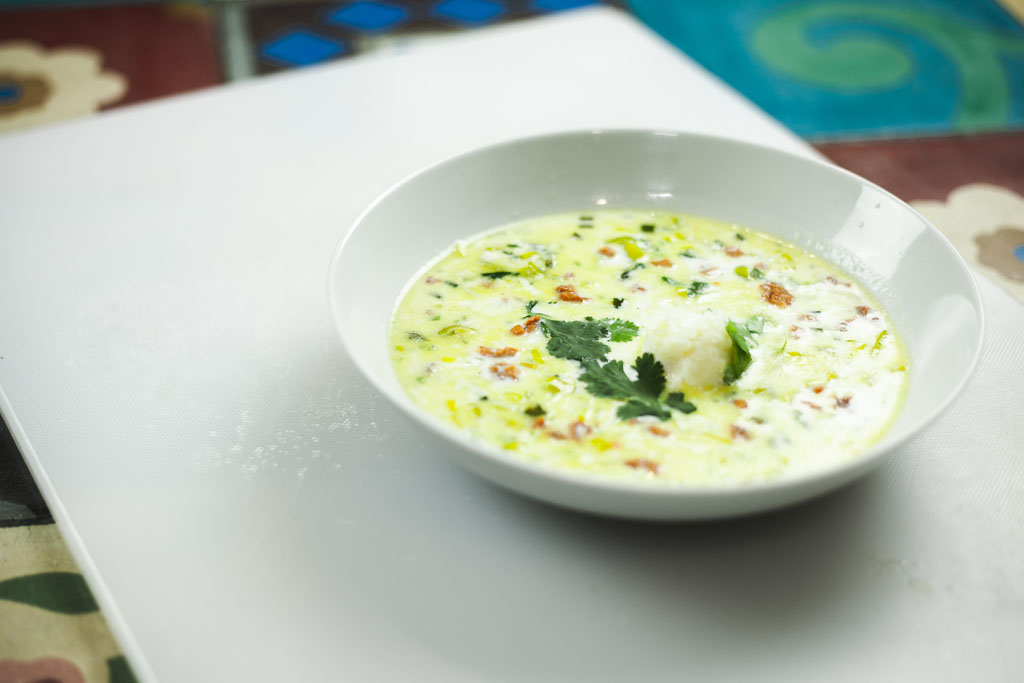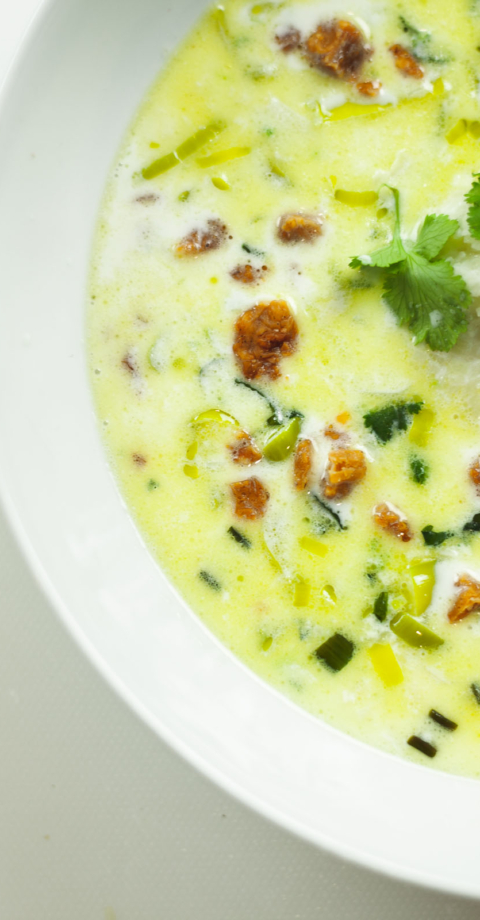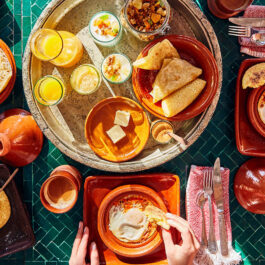November calls for comfort food, and this gourmet version of a traditional soup is first in line. Celebrity Chef Sumito Estevez shares step-by-step instructions for whipping up a warming bowl of Pisca Andina, alongside a handful of tips for amping up this cold-weather Venezuelan classic with just a few ingredients.
Could you introduce yourself, for those who don’t know you?
My name is Sumito Estevez. I’m Venezuelan, raised in the chilly mountains of the city of Mérida in the Andes region, where I got my degree in Physics. While living in Caracas in 1989, I met chef Franz Conde (currently Executive Chef at the Amsterdam Hilton), who made me decide to give cooking – my passion since childhood – a chance.
Since then, I’ve built a solid career with projects both in restaurants and at cooking schools. I now live in Santiago, Chile where I manage my food project, Sumo Gusto. I’m also the Deputy Director of the Center for Gastronomic Innovation, and I manage my own YouTube cooking channel.
What’s your cooking mantra?
In my book, “12 Steps To Cook The Image Of A Country”, I share my non-negotiable principles when it comes to cooking:
As a cook, I’m responsible for the preservation of the heritage of my country. I see cooking as a way to help consolidate our culinary identity, which, in my case, means documenting techniques, generating flavour bases, defining areas of origin, and joining colleagues in creating new projects and establishing movements.
Cooks are also responsible for the health of those they feed. This has led me to create dishes that, at the very least, won’t hurt people.
I think cooking and ecology go together, and I always prioritise sustainability. This is why I reject monocultures and genetically modified crops, and I will never buy any kind of meat that’s prohibited by law.
Cooking should never cause hunger. I believe that food should be a vehicle for achieving a dignified life for farmers who are trapped by the funnels of marketing chains. I believe in a fair distribution of the profits, without impoverishing the environment. Throwing away food is a sin.

The recipe I present here, Pisca Andina, is particularly close to me because it’s specifically from the mountains where I grew up.
Why and how did you start cooking on your YouTube Channel?
It’s a funny story. I was walking down a street in Santiago de Chile, and next to me were a woman and her daughter of about 10 or 12, who had a very clear Venezuelan accent. I thought to myself, “This girl will grow up and make her life in Chile. I truly hope she learns to cook Venezuelan recipes, so that she always has a way to go back to her roots.”
Simultaneously, the producer Sofrito Creativo came to me with a proposal for YouTube, and it all made sense to me. This channel is a huge cultural project with the goal of becoming a modern digital archive of our roots, so that Venezuelans scattered around the world always have a place to come back to.
What’s your favourite recipe from your channel, and why?
It may sound cliché, but it’s difficult to choose. Each recipe on this channel has a meaning and a curatorship – both in terms of heritage, and from those more modern recipes that represent our cultural evolution. The recipe I present here, Pisca Andina, is particularly close to me because it’s specifically from the mountains where I grew up.
When adapting a traditional recipe to your own ‘gourmet’ version, where do you start?
It’s a fairly organic process that combines several aspects: I want the recipe to be replicable in other places and countries; I want it to meet the expectations of anyone who imagines it when stepping into a restaurant; I want it to reflect my gastronomic and aesthetic philosophy; and, finally, I want it to generate technical challenges.

Your cuisine is very much Venezuelan. Do you ever look to your Indian roots for inspiration in your recipes?
For my commercial projects, not very often – unless it’s for a very specific event such as a festival. For YouTube or TV, it’s more likely to happen, but I always make it clear that my mother was born in India. So, if I cook Indian gastronomy it’s because I’m recreating part of my own childhood.
Pisca Andina is ideal for these next few months as temperatures drop. What side dish would you recommend to serve with it, for a truly Andean experience?
Being a soup, Pisca Andina doesn’t necessarily require a side dish. However, it would make sense to enjoy it with an ‘Arepa Andina’ – just know that Andean arepas are made with wheat flour, instead of corn.














Sorry, the comment form is closed at this time.